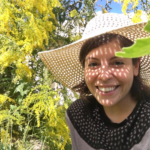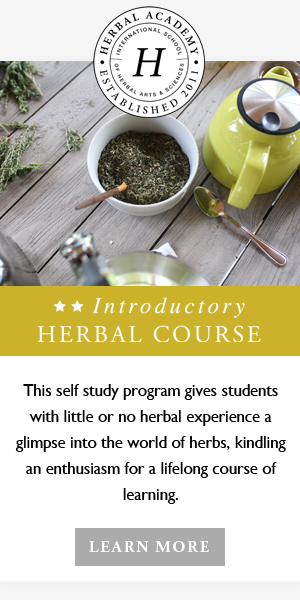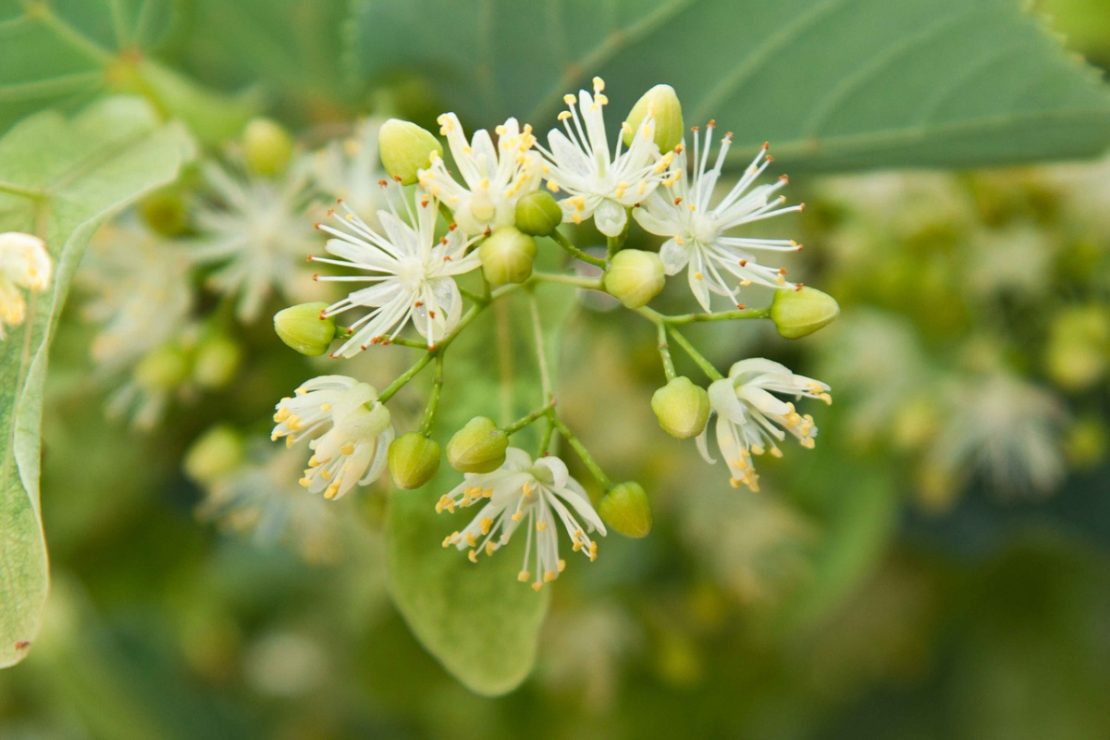
Herbal Trees
Trees are a lovely way to decorate and enhance the landscape in a multitude of ways. Some trees are large with dense canopies and these make for excellent shade trees. Smaller trees, often cross-classified as shrubs, can be great for landscaping or placement closer to a building. There are many flowering trees that add a pop of color, are good for pollinators, and lend a lovely scent to the air. Herbal trees go a step beyond all of this and not only add to our external world, but our inner world of health and wellness also.
Many herbal allies appear in tree form. Herbal trees in particular not only add to our external world; they also contribute immensely to our inner world of health and wellbeing. Some trees provide medicine through the bark, others through leaves, flowers, or the fruits they produce. Harvesting bark is more labor-intensive and poses a greater risk to the health of the tree if not done properly. We’ll focus on herbal trees that provide allyship through leaves, flowers, and fruit. Harvesting these parts of the plant does not pose a great risk to the health of the plant, and these are the most accessible to the well-seasoned herbalist and novice alike.

Arboriculture 101
Like with any plant, you’ll want to make sure that the conditions of your planting space are well suited to the needs of the herbal tree you select before you buy it and bring it home. This includes the normal considerations like climate, sun, soil, watering, and space requirements. Planning all this out ensures your herbal tree can live a long and happy life.
With long-lived perennials like trees, potential height and spread are important considerations. Will the roots or crown impact yours or another’s property, or utility lines, overground or underground? Tree roots may reach just as broad as the spread of the crown. Forethought and proper planning will ensure your herbal ally doesn’t interfere with power, phone, or sewer lines. Tree selection and placement can be a very provocative issue among neighbors.
Just like any other plant, you can start herbal trees from seeds. However, the process of germination may require a longer amount of time and stratification in a combination of warm and cold conditions. This is a process that takes time and can be a little tricky, but is not impossible. Starter trees give the grower advantages like saving time and providing a more immediate aesthetic effect to the landscape. Starter trees may be found at a local nursery, or shipped from a nursery if they aren’t accessible in your area.
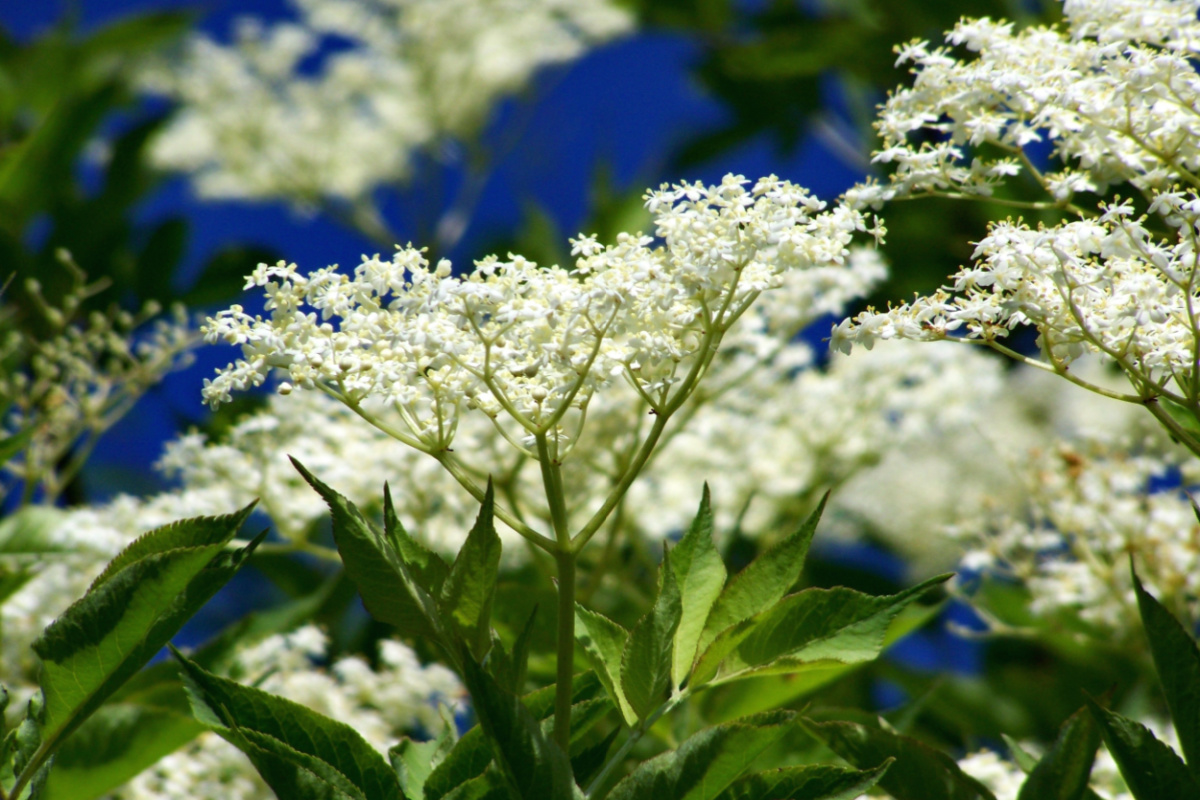
Elder Tree (Sambucus spp.)
Of all the elderberries, Sambucus mexicana, S. canadensis, and S. nigra are the species most commonly grown for their berries. These herbal trees can add beauty to your landscape. Elder trees can be grown in a wide range of hardiness zones with S. nigra and S. canadensis doing better in colder climates such as USDA hardiness zones 5-7, and S. mexicana faring better in warmer southern climates from USDA hardiness zones 7b-10 (Gilman & Watson, 1994a; Plants For A Future, n.d.a). Growing as wide as they are tall, and with a round and weeping canopy, elder trees make for a whimsical shade tree to rest under on hot days (Gilman & Watson, 1994a; North Carolina State University, n.d.a).
With no particular soil preference and requiring a moderate watering schedule, elder isn’t a very demanding herbal tree to invite into your space (Plants For A Future, n.d.a). Plant this tree where it can receive full sun, and plant it with a partner. Although elder trees can self pollinate, due to the presence of both female and male reproductive parts in the flowers, they are more successful at setting fruit when they are planted in pairs of differing varieties (Von Frank, 2019). For example, plant S.nigra and S. canadensis or S. nigra and S. mexicana together.
The elder tree gives herbal support in the form of its leaves, flowers, and berries, any of which are used fresh or dry. However, when taken internally the leaves have a purgative effect, and should be used with care in this way. The leaves are more often used externally and are considered valuable in soothing and mending wounds (Hoffmann, 2003). Elder flowers, which arrive in the spring and early summer, impart a sense of comfort and wellbeing and are helpful to the body when fighting low grade fevers, as they inspire perspiration (Gilman & Watson, 1994a; Grieve, 1971; North Carolina State University, n.d.a). The elder berries, which set following the flowers in the summer months and ripen into fall, are chock full of antioxidants, like vitamins A & C, and flavonoids (Chevallier, 2000; North Carolina State University, n.d.a). The berries are also considered antirheumatic and laxative (Hoffmann, 2003).
A salve made from the leaves of the elder tree is applied to wounds for its vulnerary capabilities. Tinctures of the flower are available, but the flowers make a delightful infusion that is not overpoweringly floral. The berries are commonly used in decoctions and then preserved and delivered as syrup (Hoffmann, 2003). Elderberry syrup is a very popular preparation these days, is no longer relegated to health food stores only, and can most likely be found at your local pharmacy. Many elderberry syrup recipes combine the berries and the flowers to support the body through respiratory illness.
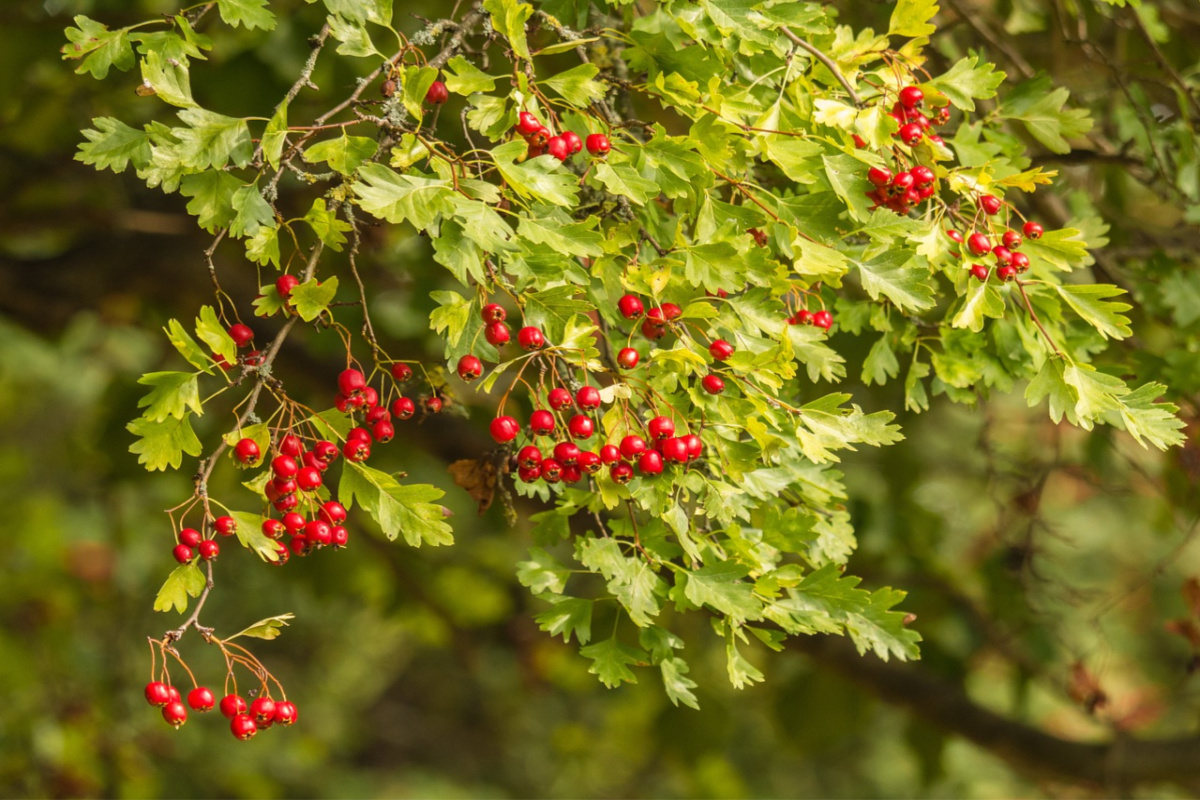
Hawthorn (Crataegus spp.)
There are over 200 species of hawthorn, and this herbal tree can be found growing throughout temperate regions of the Northern Hemisphere. Hawthorns also come in a wide range of sizes, so bringing this herbal tree into your landscape is doable whether you’re looking for a shrub or a shade tree (Plants For A Future, n.d.b). This member of the rose family is a beauty to behold all through the growing season, and can add a gentle cardio tonic to your home apothecary.
Hawthorns prefer rich, well-drained soil, but can tolerate sandy or clay-heavy soil conditions. Though drought resistant, it is important to water your hawthorn tree regularly during the first year, and during heat waves or extended periods of drought (Loughrey, n.d.). Hawthorn can do well in semi-shaded areas, but it is more fruitful if placed in full sun (Plants For A Future, n.d.b). Having both reproductive functions as part of the same flowers, a single hawthorn tree can produce fruit on its own. However, like the elder tree, fruit yield is increased when planted in pairs so that cross-pollination can occur between plants (LEAF Network, n.d.).
Blooming in mid to late spring, the white or light pink flowers of the hawthorn lend a pleasant aroma to the air. These flowering tops can be harvested and dried or used fresh to make an infusion that assists in restoring blood pressure levels to normal. The fruit can be harvested in late summer or early autumn, and used fresh or dried for use later. The berries are rich in antioxidants that help to protect our blood vessels. The cardio-tonic benefits of this plant have been well known for over 2,000 years and are being confirmed by scientists in the lab today (Hoffmann, 2003; Loughrey, n.d.).
Often a combination of the flowering tops and berries is used in herbal preparation, although traditionally it was just the berries that were used (Hoffmann, 2003). Hawthorn is widely available today in a range of supplement forms from tincture to solid extract, and can be made into delightful home preparations like a simple infusion, syrup, or jam. It is important to note that hawthorn is so effective at strengthening and nourishing the heart that if you are on any heart medications it is important to consult with your doctor before beginning, and throughout, your journey with this plant ally.
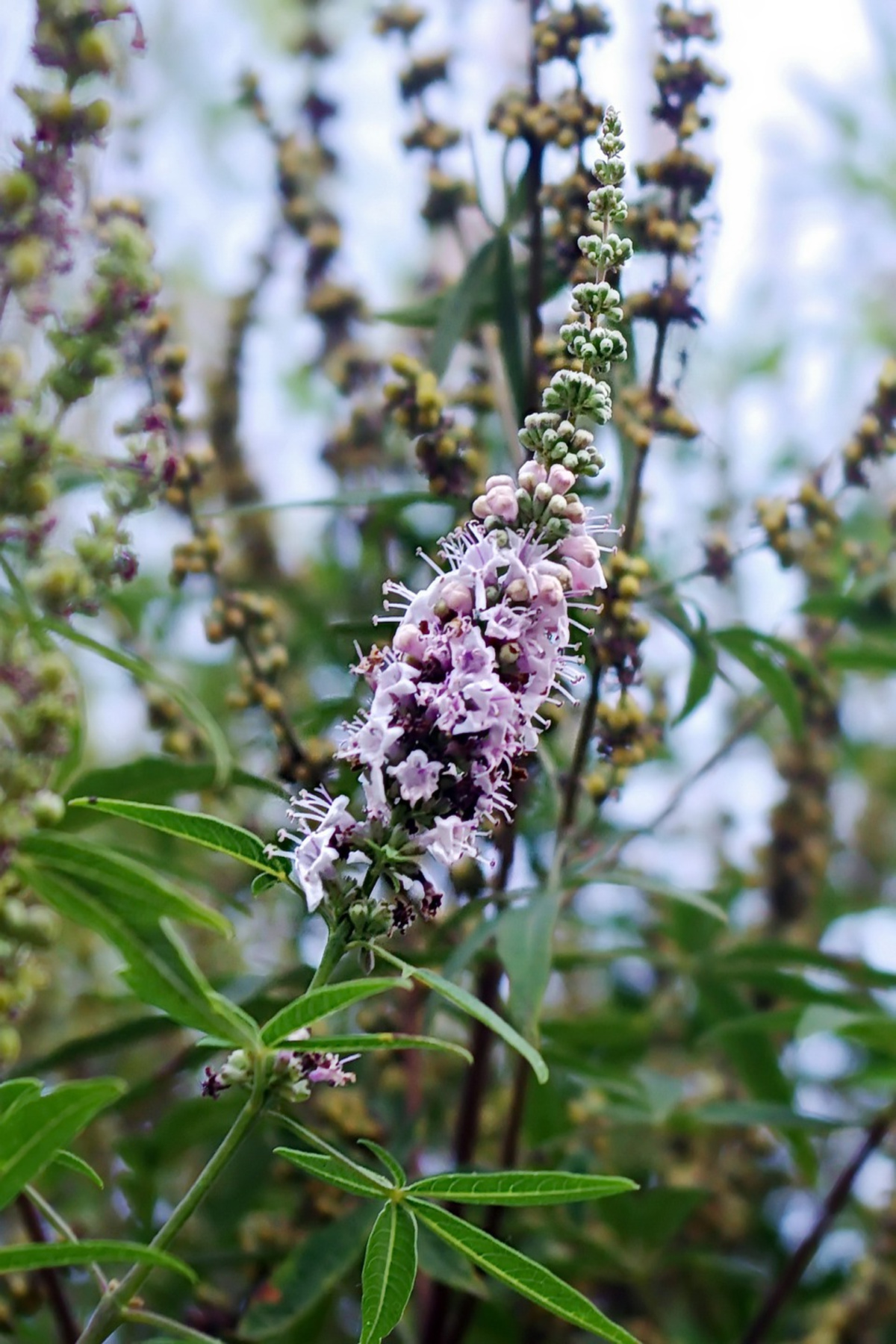
Chaste Tree (Vitex agnus-castus)
The lilac-colored blooms of the chaste tree, are a beautiful sight to behold. Chaste tree is actually classified as a shrub, but is easily trained to be a single trunk tree. This shrub can grow to be more than 10 feet tall and span up to 20 feet (Gilman & Watson, 1994b). Native to southern Europe, and western Asia, this plant prefers a warmer climate (The Morton Arboretum, n.d.). Not only does chaste tree offer beauty and allyship; it also helps attract pollinators, making it an excellent tree to plant near the garden (Gilman & Watson, 1994b).
Well-drained soil and direct sun are best for this herbal tree. Only a moderate amount of watering is necessary to keep your chaste tree thriving (Hartung, 2011). Being a hardy shrub, chaste tree requires pruning to develop good structure, and to train it into a tree shape. Once the plant is established and structure is in place, depending on your aesthetic preferences, occasional pruning may be required since branches tend to droop towards the ground.(Gilman & Watson, 1994b). The flowers bloom in late spring or early summer, and the berries set once flowers are pollinated.
The berries are the part of the chaste tree used in herbal preparation. Chasteberries start green and ripen to a black ashen color. Vitex acts on the hypothalamic-pituitary axis in the brain to regulate hormone production systemically, and is effective at treating moderate to severe PMS (Webster et al., 2010). Considered an amphoteric, chaste tree has the capability to produce seemingly opposite results, such as increasing hormone levels in one person and decreasing them in another. This is relative to the case and what is needed in each individual, as this herb helps the body to seek harmony and balance (Hoffmann, 2003).
Both the green and fully-ripened berries can be used, although green berries should be fully dried in open air, before they are stored (Hartung, 2011). The berries, with their peppery flavor, can be used as a pepper substitute and easily incorporated into the diet this way (Plants For A Future, n.d.c). Simply add the whole vitex berries to a pepper grinder, perhaps intermingled with actual peppercorns, and use as you would normally use pepper in your cooking. You can make a decoction of the berries if you find the taste agreeable, and chasteberry alcohol or vinegar extracts are other excellent ways to enjoy this herbal ally (Hartung, 2011).
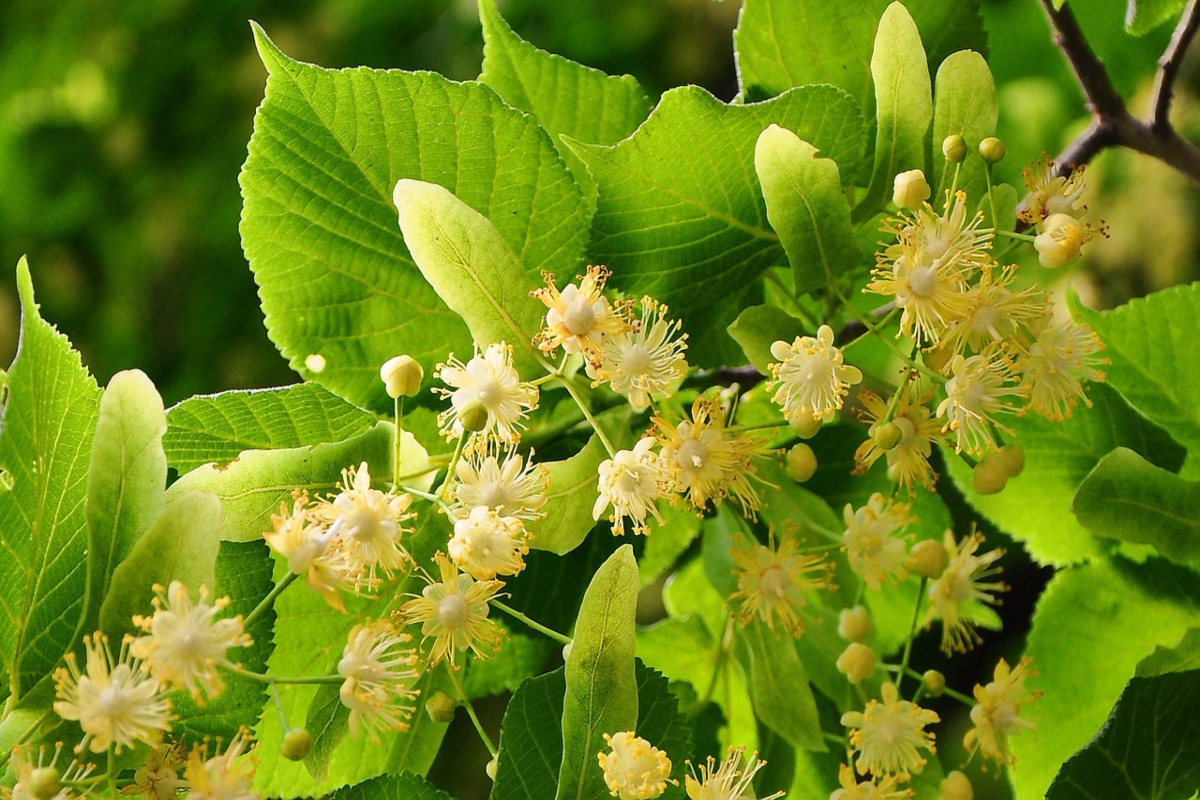
Linden (Tilia spp.)
There are 30 different species of linden trees, and all of them can be used interchangeably in herbal preparations (Smith, 2017). With a wide natural range spanning North America, Europe, and part of Asia they can tolerate below-freezing temperatures and do well in temperate climates (North Carolina State Extension, n.d.b). With the potential to grow more than 50 feet tall, this is one of our larger herbal trees. The height and dense canopy of a tilia tree make it another excellent shade tree.
Noted for its adaptability, linden can do well in almost any soil condition, but does not tolerate wet soil or prolonged drought. The tree flowers in the summer, and the clusters of cream and yellowish flowers give off a pleasant aroma that graciously perfumes the air. Plant your linden tree where it will be in full sun, or just partial shade, and be sure to consider any utility line placement, as this tree has the potential to interfere with power and telephone lines as it grows taller (Arbor Day Foundation, n.d.a).
The flowers, which scent the summer air where gown, are used in herbal preparations. Linden flowers have a relaxing and restorative effect on the nervous system, and combined with anti-inflammatory and diuretic qualities, make this ally good for the heart. The relaxation effect and ability to gently promote perspiration also makes linden a popular herb when coping with cold and flu symptoms(Hoffmann, 2003).
Linden tincture is a good way to benefit from this herbal ally, and may be preferable to an infusion depending on the palate. While linden is commonly and effectively employed as an infusion, the strong floral taste may be overpowering for some individuals. It is good to know we have options when exploring avenues to access the gifts of these plants.
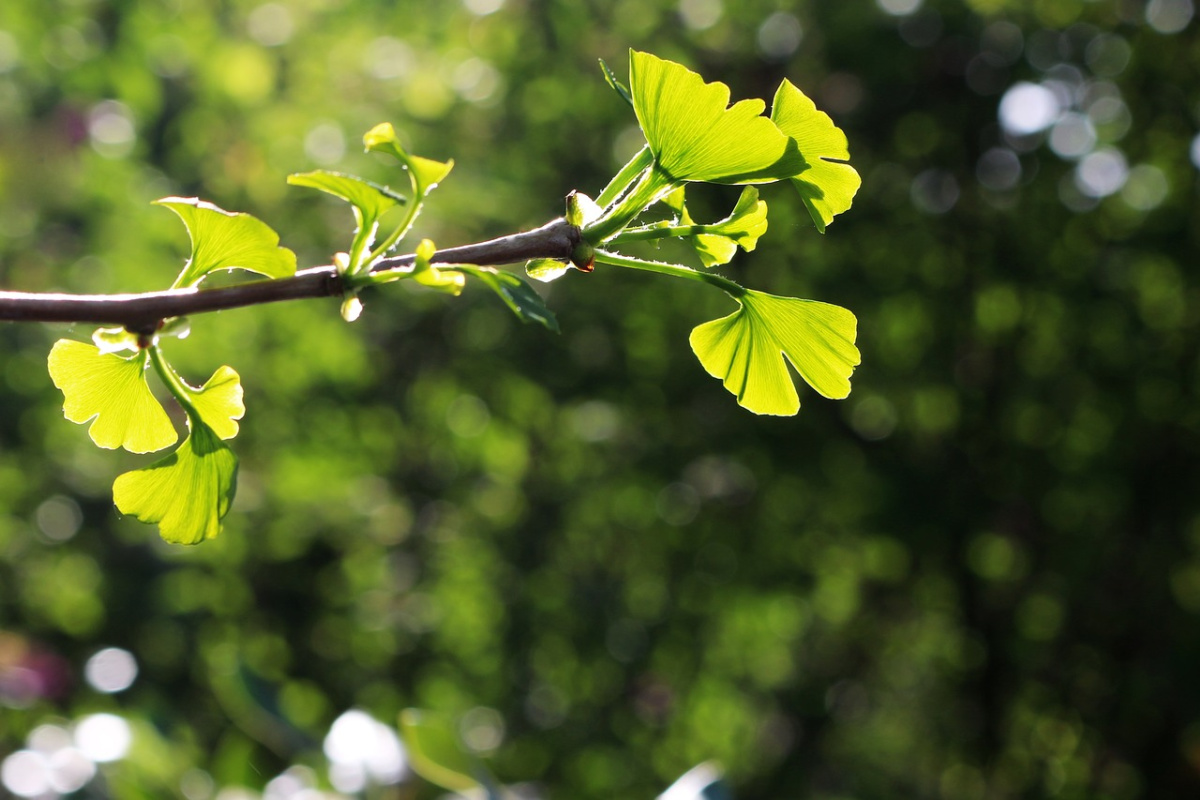
Ginkgo (Ginkgo biloba)
The ginkgo tree is often referred to as a living fossil. Ginkgo is in a class all to itself, both literally in terms of taxonomic classification, as well as in its staying power. Fossils of these trees’ distinctive two-lobed leaves date back more than 200 million years. Native to China, this tree now grows all over and fares well in climates where the average low temperature is between 20 degrees and negative 30 degrees (Arbor Day Foundation, n.d.b). This tree does not have a showy swath of spring or summer flowers. Instead, ginkgo shines brightest in the fall when the leaves turn a rich golden color before they fall from the tree.
Reaching up to 50 feet tall, and 35 feet wide at maturity, ginkgos make unique and beautiful shade trees. They grow at a slow to moderate pace, and may be slow-growing in early years (Natural Resources Conservation Service, n.d.b). Ginkgo will grow in just about any type of soil, but it doesn’t tolerate hot and dry climates well. Like the other herbal trees we’ve talked about, it is best to plant your ginkgo tree in full sun or partial shade (Arbor Day Foundation, n.d.b). Ginkgo trees are dioecious, meaning that there are separate male and female trees, rather than having both reproductive functions on the same plant. Typically, nurseries sell male plants as they do not bear fruit and therefore will not shed fruit (Urban Forestry Outreach, Research & Extension, n.d.).
The leaves of the ginkgo tree are the part used in herbal preparation, and they are most potent in the fall, after the leaves change from green to gold. This is because as the chlorophyll levels drop, the flavones and cyanidin compounds increase as a proportion of the leaf. Flavonoids like quercetin, ginkgolides, and glycosides as well as the terpenes present in ginkgo are credited for the action this plant has in the body (Castigliego Sanchez, 2011). With its antioxidant effect on the brain, the ability to increase circulation and the uptake of nutrients, this plant is a valued brain tonic.
The taste of ginkgo leaves is tart and astringent, and they make a delicious addition to sauteed vegetables in the summer when the leaves are green. The leaves may be enjoyed as an infusion when steeped in water, either alone or as part of a tea blend. Ginkgo tinctures are also available, or you can make your own if you invite this tree to become a part of your landscape.
In Conclusion,
Adding herbal trees to your landscape will not only beautify your environment, but also aids in the nourishment and health of your bodies. Living in the company of our herbal allies by inviting them into your yard or garden, adds so much depth through personal relationship with the plants. There is much vibrancy and generosity in these plants, and spending time tending them allows us to connect deeper with those qualities within ourselves. The most important infusion in herbalism is not the infusion of plants into water or alcohol, but the infusion of plants into our very own lives and spirits.
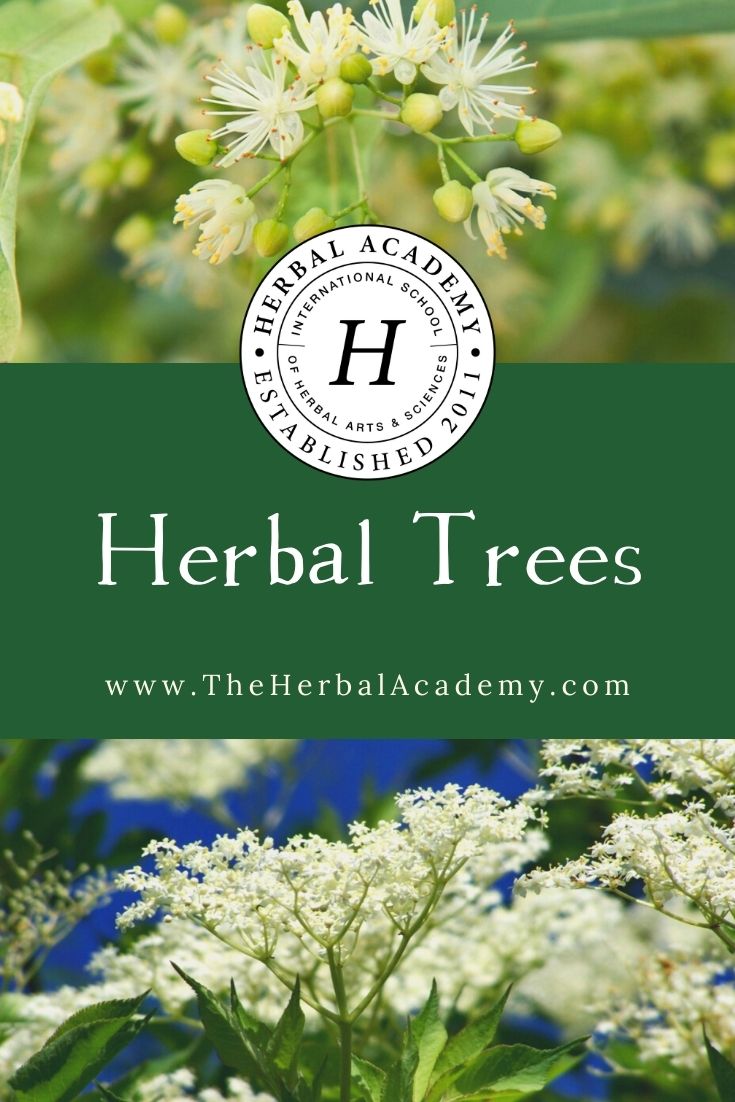
RESOURCES
Arbor Day Foundation. (n.d.a). Littleleaf linden: Tilia cordata [Database]. Retrieved from https://www.arborday.org/trees/treeguide/TreeDetail.cfm?ItemID=858
Arbor Day Foundation. (n.d.b). Ginkgo: Ginkgo biloba [Database]. Retrieved from https://www.arborday.org/trees/treeguide/TreeDetail.cfm?ItemID=1092
Castigliego Sanchez, J. (2011). Harvest and reap. AZ: JoAnn Castigliego Sanchez.
Chevallier, A. (2000). Encyclopedia of herbal medicine: The definitive reference to 550 herbs and remedies for common ailments. New York, NY: DK Publishing Inc.
Gilman, E.F. & Watson, D.G. (1994.a). Sambucus mexicana: Mexican elder [PDF]. University of Florida, Institute of Food and Agricultural Sciences. Retrieved from http://hort.ufl.edu/database/documents/pdf/tree_fact_sheets/sammexa.pdf#:~:text=Scientific%20name:%20Sambucus%20mexicana%20Pronunciation:%20sam-BEW-kuss%20meck-sih-KAY-nuh%20Common,available%20in%20many%20areas%20within%20its%20hardiness%20range
Gilman, E.F. & Watson, D.G. (1994.b). Vitex agnus-castus: Chastetree [PDF]. University of Florida, Institute of Food and Agricultural Sciences. Retrieved from http://hort.ufl.edu/database/documents/pdf/tree_fact_sheets/vitagna.pdf
Grieve, M. (1971). A modern herbal: The medicinal, culinary, cosmetic and economic properties, cultivation and folk-lore of herbs, grasses, fungi, shrubs & trees with their modern scientific uses. New York, NY; Dover Publications, Inc.
Hartung, T. (2011). Homegrown herbs: A complete guide to growing, using, and enjoying more than 100 herbs. North Adams, MA: Storey Publishing.
Hoffmann, D. (2003). Medical herbalism: The science and practice of herbal medicine. Rochester, VT: Healing Arts Press.
LEAF Network. (n.d.). Pollination requirements for edible trees [PDF]. Retrieved from https://leafnetworkaz.org/resources/Documents/Pollination%20Requirements%20for%20Edible%20Trees%20table.pdf
Loughrey, J. (n.d.). Growing and caring for hawthorn trees: Multi-seasonal appeal and reliability are hallmarks of this common landscape plant [Website]. Garden Design. Retrieved from https://www.gardendesign.com/trees/hawthorn.html
The Morton Arboretum. (n.d.). Chaste tree [Database]. Retrieved from https://www.mortonarb.org/trees-plants/tree-plant-descriptions/chaste-tree
Natural Resources Conservation Service. (n.d.a). Crataegus L. hawthorn [Database]. United States Department of Agriculture. Retrieved from https://www.plants.usda.gov/core/profile?symbol=CRATA
Natural Resources Conservation Service. (n.d.b). Plant guide: Ginkgo [PDF]. United States Department of Agriculture. Retrieved from https://plants.usda.gov/plantguide/pdf/pg_ginkg.pdf
North Carolina State Extension. (n.d.a). Sambucus canadensis [Database]. North Carolina State University. Retrieved from https://plants.ces.ncsu.edu/plants/sambucus-canadensis/
North Carolina State Extension. (n.d.b). Tilia cordata [Database]. North Carolina State University. Retrieved from https://plants.ces.ncsu.edu/plants/tilia-cordata/
Plants For A Future. (n.d.a). Sambucus nigra – L. [Database]. Retrieved from https://pfaf.org/user/plant.aspx?latinname=Sambucus+nigra#:~:text=Conservation%20Status%20%20%20%20Latin%20Name%20,%20%20M%20%2014%20more%20rows
Plants For A Future, (n.d.b). Crataegus species – the hawthorns [Database]. Retrieved from https://pfaf.org/user/cmspage.aspx?pageid=59
Plants For A Future, (n.d.c). Vitex agnus-castus – L. [Database]. Retrieved from Vitex agnus-castus Agnus Castus, Lilac chastetree, Vitex, Chastetree PFAF Plant Database
Smith, E.. (2017). Plant profile: Linden/lime. [Blog]. Integrative Family Medicine of Asheville. Retrieved from https://www.integrativeasheville.org/plant-profile-lindenlime/#:~:text=There%20are%2030%20different%20species,species%20can%20be%20used%20interchangeably
Urban Forestry Outreach, Research, & Extension. (n.d.). Ginkgo [Database]. University of Minnesota. Retrieved from https://trees.umn.edu/nursery-tour/species/gi
Von Frank, A. (2019). The complete guide to growing elderberry trees [Blog]. Tyrant Farms. Retrieved from https://www.tyrantfarms.com/growing-elderberry-trees-elderberries-elderflowers/
Webster, D.E., He, Y., Chen, S.C., Pauli, G.F., Farnsworth, N.R., & Wang, Z.J. (2010). Opioidergic mechanisms underlying the actions of Vitex agnus-castus L. Biochem Pharmacol, 81(1), 170-177. https://doi.org/:10.1016/j.bcp.2010.09.013

